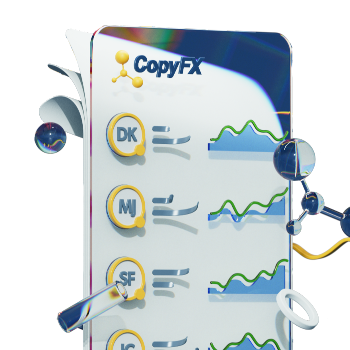USD/CAD: Analysis of the Current Trend and Expert Forecasts for 2024

10 minutes for reading
USD/CAD is among the most sought-after currency pairs in international trade. On 25 January, we examined the key factors influencing the pair’s exchange rate, analysed the dynamics of price changes in 2023, conducted a technical analysis of its chart, and explored expert forecasts for 2024-2025.
You can visit the RoboForex Market Analysis webpage for the latest USD/CAD forecasts.
Overview of the USD/CAD currency pair
USD/CAD shows the ratio of the US dollar (USD) to the Canadian dollar (CAD). Its quotes indicate how many Canadian dollars must be paid for one US dollar. When the pair exchange rate rises, this means that the US dollar is strengthening against Canada’s currency. When the exchange rate drops, this signals that the Canadian dollar is on the rise against the US dollar.
Trading characteristics of the USD/CAD pair
- The currency pair is traded around the clock from Monday to Friday, with significant trading volumes and maximum volatility during the American trading session. During this period, the US and Canada release the most crucial economic statistics that have a significant impact on the pair's exchange rate
- USD/CAD is quite volatile, characterised by average daily movements ranging from 800 to 1,000 pips. During periods of intense global market movements, the pair’s volatility may increase to 2,000-3,000 pips per day in the short term
- USD/CAD is one of the major currency pairs, which is why the spread is small, thanks to its popularity and high liquidity. In a typical market environment, the spread ranges from 10 to 15 pips in popular ECN accounts
Key factors influencing the USD/CAD quotes
The Bank of Canada’s monetary policy
The Bank of Canada has actively combated mounting inflation from March 2022 to July 2023 by tightening its monetary policy. It is worth noting that the interest rate was raised nine times over this period, with the last increase at a meeting in July 2023. Since then, the rate has remained at 5%. The interest rate hikes have supported the Canadian dollar exchange rate. In its monetary policy, the Bank of Canada focuses on achieving the inflation target of 2%.
The country’s CPI decreased in the second half of 2023, falling from 8.4% in July 2023 to 3.4% in January 2024.
In its reports, the central bank highlights that higher interest rates help ease price pressures in the country, leading to reduced inflation. However, progress to the 2% target is slow. The regulator expects inflation will persist at 3.5% by mid-2024 and return to the 2% target in 2025.
At its last meeting on 24 January 2024, the Bank of Canada kept the interest rate at 5%. Following the meeting, Tiff Macklem, the regulator’s governor, noted that the Governing Council reached a clear consensus on the size of the indicator, and it was necessary to allow higher rates time to take effect. As there are currently no signals of possible rate cuts, it can be presumed that the rate will likely remain unchanged in the first half of 2024.
The US Federal Reserve’s monetary policy
The US Federal Reserve also seeks to curb inflation by tightening monetary policies, with the inflation target at 2%. From the beginning of 2022 to July 2023, the interest rate has gradually risen from 0.25% to 5.5%. This has significantly impacted the US dollar’s exchange rates, which strengthened markedly against many world currencies during this period.
The situation has now changed, with inflation gradually decreasing and high interest rates exerting pressure on the US economy. The country’s CPI was 3.4% in January. The regulator’s minutes refer to slowing economic growth and a smooth decline in inflation, perceived by analysts as a signal of potential rate cuts in 2024. Experts anticipate that the Federal Reserve’s interest rate may be reduced at the March and May 2024 meetings. These expectations will exert pressure on the pair’s quotes.
Oil prices
The Canadian dollar exchange rate is influenced by various factors, including commodity prices, primarily oil prices. As a major exporter of natural resources, especially oil, Canada depends on demand for its products, with the US being their primary consumer. Due to the strong impact of oil prices on the exchange rate, CAD is considered a commodity currency.
Representatives of this group usually experience a price decline when the investment environment worsens and demand for natural resources falls. Conversely, an increase in oil prices provides support for such currencies. Rising crude oil prices help strengthen the Canadian dollar, leading to a decline in the USD/CAD exchange rate. Conversely, a drop in oil prices pushes the currency pair up as Canada’s currency weakens.
Brent quotes hovered within a wide price range from 70 USD to 96 USD in 2023. The OPEC+ policy aimed at limiting oil production bolstered oil prices. If oil prices rise, securing a foothold above 80 USD could provide considerable support for the Canadian dollar exchange rate and trigger a decline in the USD/CAD quotes. Conversely, a drop in oil prices below 70 USD will adversely affect the Canadian currency and may drive up the pair.
Economic development indicators of the US and Canada
- Interest rate decisions of the Bank of Canada and the US Federal Reserve
- Inflation reports
- Unemployment Rate
- Nonfarm Payrolls
- GDP Growth Rates (GDP)
- Inflation Indices (CPI, PPI)
- Industrial Production (Industrial Production Index)
- Retail Sales
- Trade Balance
- Consumer Confidence Index
- ISM Manufacturing Purchasing Managers Index
- Global oil prices
2023 USD/CAD price market outlook
The pair showed mixed trends in 2023, starting the year at 1.3545. During the subsequent months, quotes ranged from 1.3100 to 1.3900. With no clear long-term trend observed during the year, the price underwent local movements within the above range.
The decline in the quotes was attributed to the Bank of Canada’s rate hike policy and stable oil prices, which remained above 70 USD per barrel, supported by the OPEC+ restrictive policy. A growth driver for the pair’s exchange rate was the Federal Reserve’s interest rate hike policy and the strengthening of the US dollar against other currencies.
2023 USD/CAD price market outlook*
USD/CAD technical analysis
When writing, the USD/CAD currency pair is undergoing an upward correction on the daily chart following a rebound from the robust support area of 1.3100-1.3180. The Alligator indicator and the 200-day Moving Average support the current upward momentum. The quotes presently range between 1.3415 and 1.3545, and the breakout direction from this range may serve as a reference point for near-term prospects of the exchange rate movements.
If the quotes confidently close above the resistance level of 1.3545, aligning with the 50% Fibonacci retracement level, they may rise to 1.3620. After breaking above this level, the price might maintain its upward trajectory to the 15-month high of 1.3900. If the quotes establish themselves below the support level of 1.3415, this could support a downward scenario, with the price potentially declining further to 1.3180.
USD/CAD forecast for 2024–2025
- Analysts at J.P. Morgan Research expect the pair’s exchange rate to stand at 1.3300 in December 2024
- Citibank specialists suggest that the USD/CAD quotes will rise to 1.4000 by the end of 2024
- Economists at ING Group believe that the Canadian dollar will strengthen, leading to the currency pair declining to 1.2800 by the end of 2024 and 1.2700 by the end of 2025
- Analysts at the Economy Forecast Agency (EFA) forecast the exchange rate to be 1.3140 by the end of 2024 and 1.3830 by the end of 2025
- According to the Wallet Investor portal’s estimates, USD/CAD will hover at 1.3670 by the end of 2024 and 1.3940 by the end of 2025
Strategies for Trading USD/CAD
- Trading with fundamental analysis. This approach involves analysing factors such as the publication of economic statistics, expectations of interest rate changes, or the current trend in global stock and commodity markets. Typically, this is a long-term trading strategy, with positions held for several weeks to a year or more
- Trading with technical analysis. This trading method is based on carefully analysing the currency pair's chart. Classical technical analysis is applied here (trend lines, price patterns, support, and resistance levels), along with various proprietary methods, candlestick combinations, Price Action patterns, and others. Usually, trading with technical analysis tools has a medium-term or short-term nature
- Trading with indicators. This trading strategy uses signals from various technical indicators. This can be a single complex indicator or a combination of several simpler ones. Based on their signals, the direction of trading, entry, and exit points are determined. Indicator signals can be applied for automating trading in specialised programs – advisors
Summary
In 2023, the quotes of the USD/CAD pair demonstrated a sideways dynamic, moving within a wide price range of 1.3100-1.3900. Regulators in Canada and the US actively tightened monetary policy to reduce growing inflationary pressure. Interest rates are currently at 5.0% and 5.5%, respectively.
Factors favouring the Canadian dollar now include expectations of a decrease in the Federal Reserve's interest rate and attempts by oil prices to remain above the 80 USD mark. If these factors materialise, then in the medium term, the pair may decline to semi-annual lows, specifically to 1.3100-1.3180. According to experts' forecasts of the experts mentioned above, the USD/CAD exchange rate will be in the range of 1.2700-1.4000 in 2024-2025.
FAQ
Why is USD/CAD forecasting important?
Forecasting is essential for strategic planning and risk management, helping investors predict possible movements of the currency pair.
What methods are used to forecast USD/CAD?
Commonly employed methods include fundamental analysis, technical analysis, and sentiment analysis.
How accurate are USD/CAD forecasts?
While forecasting methods have their advantages, they are not entirely reliable. Various factors can affect USD/CAD and trigger unexpected price movements.
What are the risks in USD/CAD forecasting?
The primary risk lies in the unpredictability of global political and economic events that can significantly affect the USD/CAD rate.
What potential future events could trigger changes in the USD/CAD exchange rate?
The list of potential events is extensive, including shifts in the monetary policies of US and Canadian regulators, considerable fluctuations in oil prices, geopolitical changes, natural and human-caused disasters, and crisis developments in national and global economies.
Will the USD/CAD exchange rate continue to remain volatile?
Influenced by various factors, the USD/CAD rate may maintain its volatility.
How does the difference in interest rates affect the USD/CAD rate?
An increasing interest rate in the US contributes to the pair’s upward movement, whereas an interest rate hike in Canada exerts downward pressure on the USD/CAD quotes.
* – The charts presented in this article are provided by the TradingView platform, which offers a wide range of tools for analyzing financial markets. It is a convenient, high-tech online market data charting service that allows users to perform technical analysis, research financial data, and communicate with other traders and investors. Moreover, it provides valuable guidance on how to read forex economic calendar effectively and includes insights into other financial assets.












